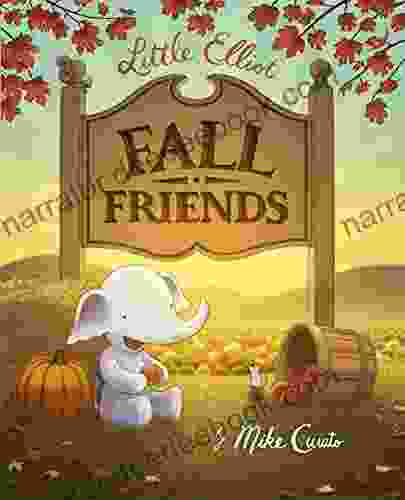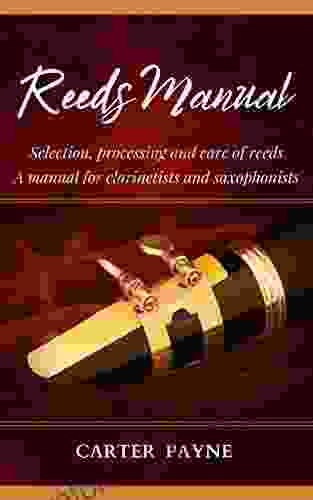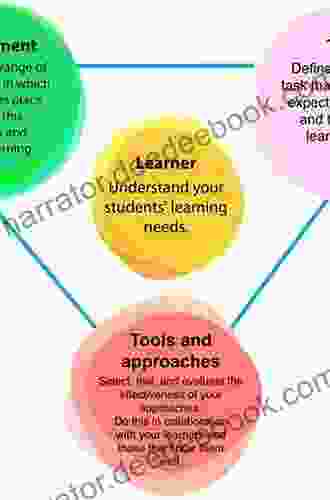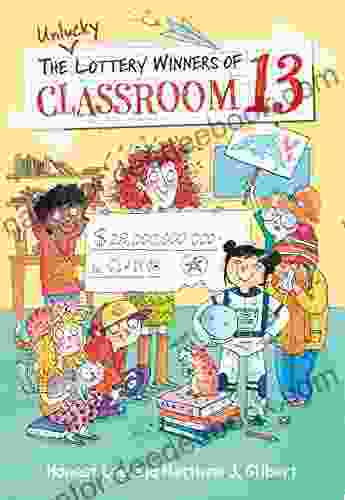Teacher's Guide to Identifying and Addressing Individual Learning Needs

4.4 out of 5
| Language | : | English |
| File size | : | 819 KB |
| Text-to-Speech | : | Enabled |
| Screen Reader | : | Supported |
| Enhanced typesetting | : | Enabled |
| Word Wise | : | Enabled |
| Print length | : | 194 pages |
Every student is unique, and their learning needs are just as diverse. Some students may excel in math, while others may struggle with reading. Some students may have a strong visual memory, while others may learn best by ng. As a teacher, it is important to be aware of the individual learning needs of your students and to tailor your instruction to meet those needs.
This guide will provide you with the tools and strategies you need to identify and address the individual learning needs of your students. You will learn how to:
* Observe your students to identify their strengths and weaknesses. * Create a variety of learning experiences to meet the needs of all learners. * Use differentiated instruction to tailor your instruction to each student's individual needs. * Provide accommodations and modifications to support students with disabilities. * Collaborate with parents and other professionals to ensure that all students are getting the support they need.
Identifying Individual Learning Needs
The first step to meeting the individual learning needs of your students is to identify those needs. You can do this by observing your students in the classroom and by talking to them and their parents.
Here are some things to look for when observing your students:
* How do they learn best? Do they prefer to learn by reading, listening, or ng? * What are their strengths and weaknesses? * Do they have any learning disabilities or other challenges? * How do they interact with their peers and teachers?
Once you have observed your students, you can talk to them and their parents to get more information about their learning needs. Ask them about their favorite subjects, their hobbies, and their goals. Find out what they are struggling with and what they need help with.
Creating a Variety of Learning Experiences
Once you have identified the individual learning needs of your students, you can start to create a variety of learning experiences to meet those needs. Here are some tips:
* Use a variety of teaching methods, such as direct instruction, cooperative learning, and hands-on activities. * Provide multiple opportunities for students to learn the same concept in different ways. * Offer choices in learning activities to allow students to choose the activities that best suit their learning styles. * Create a flexible learning environment that allows students to move around and learn in different ways.
Using Differentiated Instruction
Differentiated instruction is a teaching approach that tailors instruction to the individual learning needs of students. When you differentiate instruction, you create different learning experiences for different students based on their strengths, weaknesses, and learning styles.
Here are some ways to differentiate instruction:
* Vary the level of difficulty of assignments. * Provide different types of assignments to appeal to different learning styles. * Allow students to work at their own pace. * Provide extra support for students who need it.
Providing Accommodations and Modifications
Accommodations and modifications are changes to the learning environment or instruction that help students with disabilities access and participate in the general education curriculum. Accommodations and modifications can include things like:
* Extended time on tests * Assistive technology * Preferential seating * Modified assignments
It is important to note that accommodations and modifications are not the same thing as differentiated instruction. Differentiated instruction is for all students, regardless of their ability level. Accommodations and modifications are only for students with disabilities.
Collaborating with Parents and Other Professionals
Collaborating with parents and other professionals is essential to ensuring that all students are getting the support they need. Parents can provide you with valuable information about their child's learning needs. Other professionals, such as special education teachers, speech-language pathologists, and occupational therapists, can provide you with expertise and support.
Here are some ways to collaborate with parents and other professionals:
* Meet with parents regularly to discuss their child's progress. * Invite parents to participate in school events and activities. * Seek out the advice of other professionals when you have questions about a student's learning needs.
Meeting the individual learning needs of your students is essential to creating a more inclusive and effective learning environment. By following the strategies outlined in this guide, you can help all of your students reach their full potential.
4.4 out of 5
| Language | : | English |
| File size | : | 819 KB |
| Text-to-Speech | : | Enabled |
| Screen Reader | : | Supported |
| Enhanced typesetting | : | Enabled |
| Word Wise | : | Enabled |
| Print length | : | 194 pages |
Do you want to contribute by writing guest posts on this blog?
Please contact us and send us a resume of previous articles that you have written.
 Novel
Novel Page
Page Text
Text Library
Library Paperback
Paperback Magazine
Magazine Sentence
Sentence Shelf
Shelf Glossary
Glossary Foreword
Foreword Preface
Preface Synopsis
Synopsis Footnote
Footnote Manuscript
Manuscript Scroll
Scroll Tome
Tome Classics
Classics Library card
Library card Narrative
Narrative Autobiography
Autobiography Memoir
Memoir Reference
Reference Encyclopedia
Encyclopedia Character
Character Resolution
Resolution Librarian
Librarian Catalog
Catalog Archives
Archives Periodicals
Periodicals Reserve
Reserve Academic
Academic Reading Room
Reading Room Special Collections
Special Collections Interlibrary
Interlibrary Study Group
Study Group Thesis
Thesis Dissertation
Dissertation Awards
Awards Reading List
Reading List Book Club
Book Club Jean Valentine
Jean Valentine Lauro Martines
Lauro Martines Jojo Moyes
Jojo Moyes Alejandro Cremades
Alejandro Cremades Paul Lee
Paul Lee Daniel Tatarsky
Daniel Tatarsky John Denver
John Denver Stephen Zunes
Stephen Zunes Brittney Jett
Brittney Jett Mark Musa
Mark Musa Lane Pederson
Lane Pederson Christine Overall
Christine Overall Bruno A Cayoun
Bruno A Cayoun Kim Edwards
Kim Edwards John David Mann
John David Mann Kristen Hartbarger
Kristen Hartbarger John W Duarte
John W Duarte Gregory Long
Gregory Long Mihoko Ueno
Mihoko Ueno Matthew Loux
Matthew Loux
Light bulbAdvertise smarter! Our strategic ad space ensures maximum exposure. Reserve your spot today!

 Harvey BellLittle Elliot, Fall Friends: A Heartwarming Tale of Friendship and Embracing...
Harvey BellLittle Elliot, Fall Friends: A Heartwarming Tale of Friendship and Embracing... Roland HayesFollow ·15.8k
Roland HayesFollow ·15.8k William GoldingFollow ·18.8k
William GoldingFollow ·18.8k Jeremy MitchellFollow ·18k
Jeremy MitchellFollow ·18k Ralph Waldo EmersonFollow ·3.2k
Ralph Waldo EmersonFollow ·3.2k Jules VerneFollow ·14.4k
Jules VerneFollow ·14.4k Dylan HayesFollow ·3.5k
Dylan HayesFollow ·3.5k Levi PowellFollow ·16.6k
Levi PowellFollow ·16.6k Clarence BrooksFollow ·16.8k
Clarence BrooksFollow ·16.8k

 Abe Mitchell
Abe MitchellUnveiling the Urban Cheating Rich System: A Comprehensive...
In today's complex and ever-evolving urban...

 Preston Simmons
Preston SimmonsSelection, Processing, and Care of Reeds: A Comprehensive...
Reeds are essential...

 Rob Foster
Rob FosterKeeper of the Grail: The Youngest Templar
Prologue: A Sacred...
4.4 out of 5
| Language | : | English |
| File size | : | 819 KB |
| Text-to-Speech | : | Enabled |
| Screen Reader | : | Supported |
| Enhanced typesetting | : | Enabled |
| Word Wise | : | Enabled |
| Print length | : | 194 pages |
















